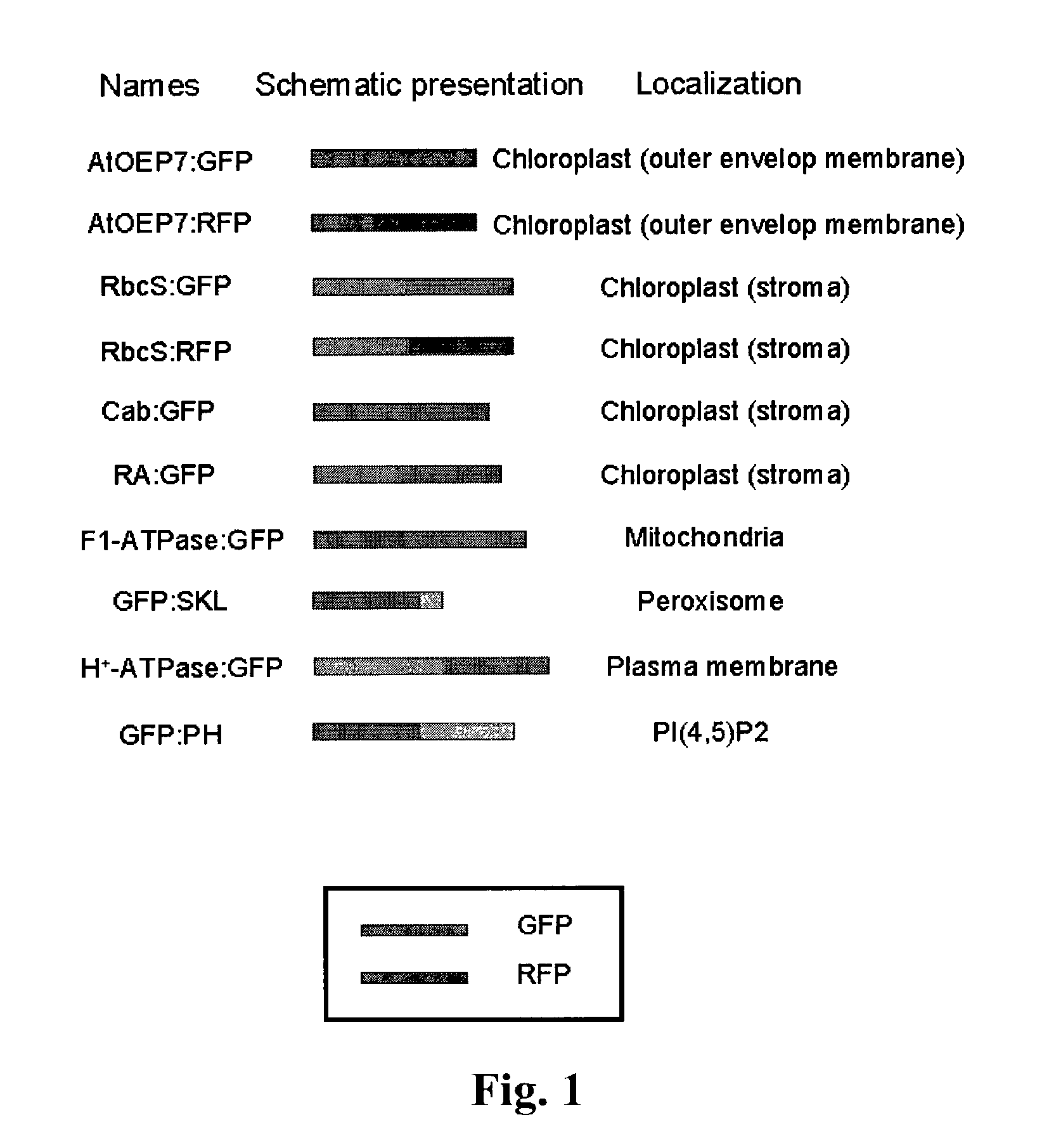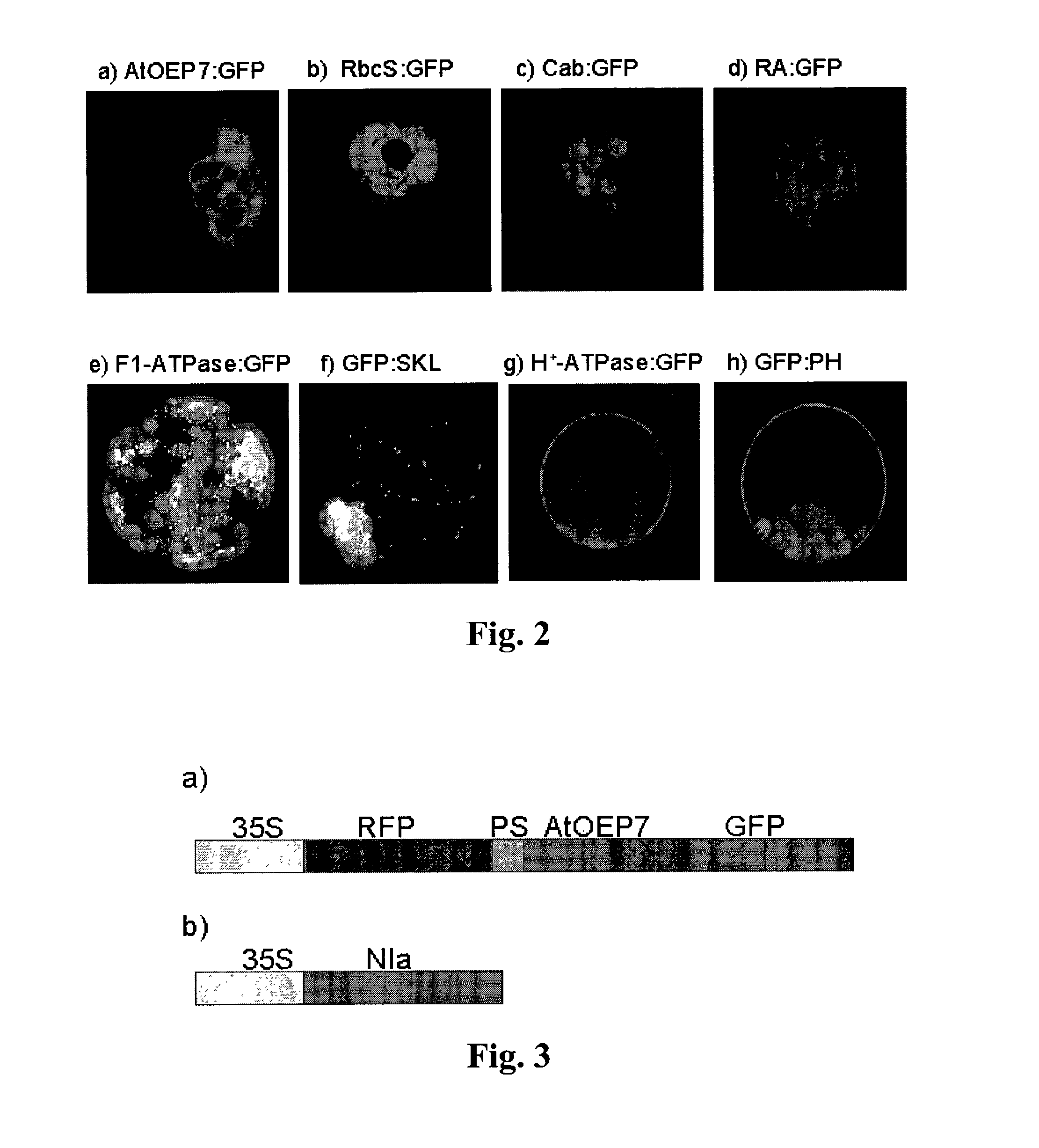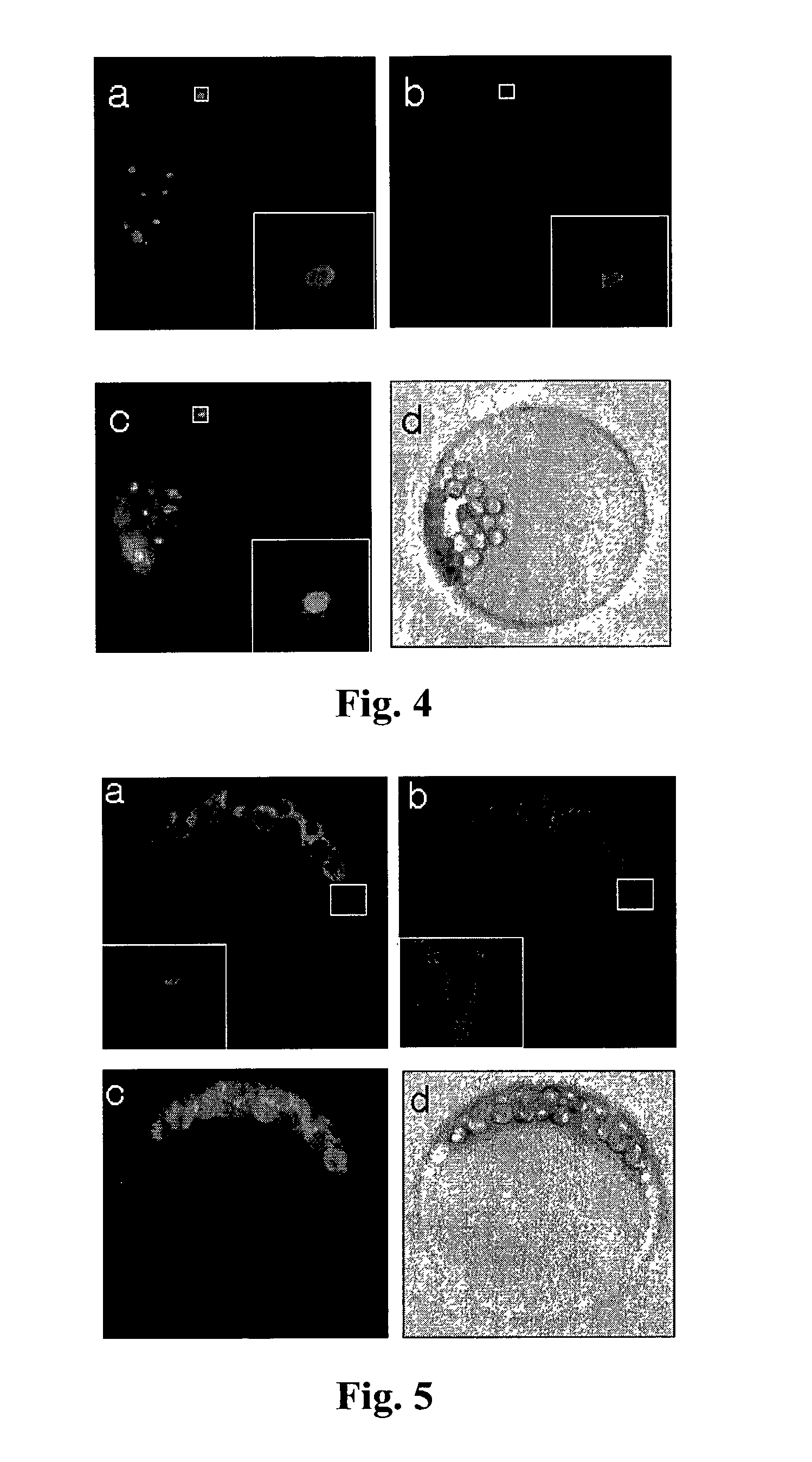System for detecting protease
- Summary
- Abstract
- Description
- Claims
- Application Information
AI Technical Summary
Benefits of technology
Problems solved by technology
Method used
Image
Examples
example 1
Detection of Chimeric Proteins and Trafficking to the Subcellular Organelles
[0180](a) Construction of Recombinant Plasmids for Expression of the Chimeric Proteins
[0181]The coding region of the outer envelope membrane protein of Arabidopsis, AtOEP7, that is a homolog of OEP14 of pea, was amplified by polymerase chain reaction (PCR) from Arabidopsis genomic DNA using two specific primers (5′-GACGACGACGCAGCGATG and 5′-GGATCCCCAAACCCTCTTTGGATGT) designed to remove the natural termination codon. Then, it was ligated in frame to the 5′ end of the coding region of the green or red fluorescent protein to construct recombinant plasmids for AtOEP7:GFP and AtOEP7:RFP, respectively. The ligated genes were regulated by the 35S promoter in the recombinant plasmids. The same method was used for construction of other recombinant plasmids described hereafter.
[0182]For expression of the chimeric protein of Rubisco (ribulose bisphospate carboxylase) complex protein, the coding region for the transit p...
example 2
Detection of Cleavage of the Chimeric Substrate Protein by Protease
[0202](a) Construction of the Recombinant Plasmids
[0203]The recombinant plasmid for NIa protease was constructed by placing the coding region of NIa protease under the control of the 35S promoter in a pUC vector.
[0204]The recombinant plasmid for Arabidopsis outer envelope membrane protein:green fluorescent protein (AtOEP7:GFP) was constructed by ligating the AtOEP7 coding region without the termination codon to the 5′ end of the coding region of the green fluorescent protein in the 326GFP vector (obtained from Arabidopsis Biological Resource Center, Ohio University, USA). The cleavage site of the protease, VRFQ, was ligated to the N-terminus of AtOEP7:GFP by PCR amplification of this plasmid with two primers (5′ primer, 5′-CCCGGGGTGTGCGCTTCCAGGGAAAAACTTCGGGAGCG and 3′ primer, 5′-GAGCTCTTATTTGTATAGTTCATC). The PCR product (SmaI and XhoI fragment) was then ligated to HindIII (filled in) and XhoI sites of the 326RFP-nt ...
example 3
In vivo Screening System for HIV-1 Protease Inhibitors
[0214]A convenient in vivo screening system for detecting inhibitors of the human immunodeficiency virus (HIV-1) protease was performed as follows.
[0215](a) Construction of Recombinant Plasmids for Expression of HIV-1 Protease
[0216]To construct a recombinant plasmid for HIV-1 protease, the coding region of HIV-1 protease was PCR amplified with two primers: (5′-TCTAGAATGCCTCAGGTCACTCTTTGG-3′ and 5′-CTCGAGTCAAAAATTTAAAGTGCAACC-3′) using pHX2BΔRT as a template. The pHX-2BΔRT is a plasmid clone containing HX2B (GenBank accession number K03455) without the reverse transcriptase coding region. The amplified product was subcloned into pBluescript-T vector and subsequently cloned into XbaI and XhoI sites of a pUC vector under the control of the 35S promotor.
[0217]The plasmids maps for HIV-1 protease is shown in FIG. 9(a) and the nucleic acid and protein sequences are given in SEQ ID NOs: 55 and 56, respectively.
[0218](b) Construction of ...
PUM
 Login to View More
Login to View More Abstract
Description
Claims
Application Information
 Login to View More
Login to View More - R&D
- Intellectual Property
- Life Sciences
- Materials
- Tech Scout
- Unparalleled Data Quality
- Higher Quality Content
- 60% Fewer Hallucinations
Browse by: Latest US Patents, China's latest patents, Technical Efficacy Thesaurus, Application Domain, Technology Topic, Popular Technical Reports.
© 2025 PatSnap. All rights reserved.Legal|Privacy policy|Modern Slavery Act Transparency Statement|Sitemap|About US| Contact US: help@patsnap.com



